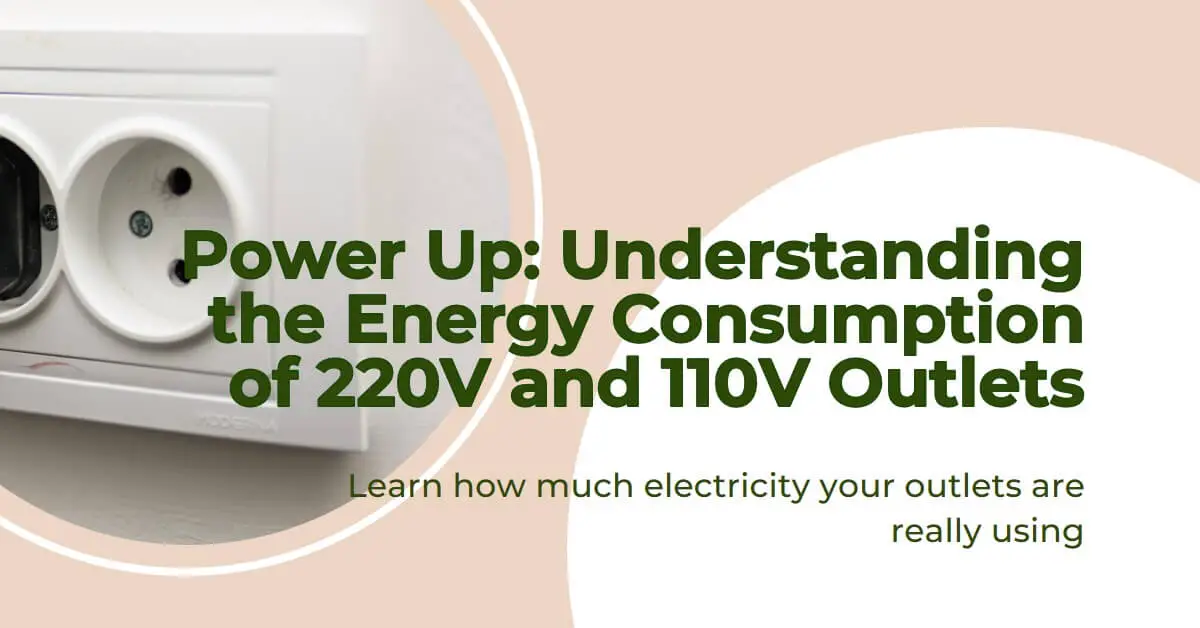Image: “Article Feature Image” by Bing, Source: [Bing Graphic Art].
Electrical outlets play a crucial role in powering our appliances and devices, but not all outlets are created equal.
One common question that arises is whether a 220V outlet consumes more electricity than a 110V outlet. The short answer is No, a 220V outlet does not inherently use more electricity than a 110V outlet.
In this article, we will explore the differences between these two types of outlets, understand the concepts of voltage and power consumption, compare their power consumption, and consider the safety aspects associated with them.
Understanding Electrical Outlets
Types of Electrical Outlets
There are two main types of electrical outlets: the 110V outlet and the 220V outlet. The numbers represent the voltage at which the outlets operate.
A 110V outlet, also known as a standard household outlet in the United States, delivers power at 110 volts. On the other hand, a 220V outlet operates at a higher voltage of 220 volts.
Voltage and Electrical Power
Voltage is the measure of the electrical potential difference between two points in a circuit. The electrical power consumed by an appliance can be calculated using the formula P = V x I, where P represents power in watts, V represents voltage, and I represents current.
Power Consumption of 110V Outlets
A 110V outlet is commonly used for powering household appliances and devices in the United States. These outlets are typically found in kitchens, living rooms, and bedrooms.
Appliances such as lamps, televisions, computers, and small kitchen appliances are designed to operate at 110V.
The power consumption of a 110V appliance is directly determined by its power rating. For example, a 1000-watt (1 kilowatt) appliance connected to a 110V outlet will consume 1000-watt hours (or 1 kilowatt-hour) of energy.
Power Consumption of 220V Outlets
A 220V outlet is commonly used for high-power appliances and equipment like electric ovens, dryers, and air conditioners.
These outlets are often found in laundry rooms and kitchens, where heavy-duty appliances are required.
Similarly, the power consumption of a 220V appliance is determined by its power rating. For instance, a 1000-watt appliance connected to a 220V outlet will also consume 1000-watt hours (or 1 kilowatt-hour) of energy.
Comparing Power Consumption
When comparing the power consumption of a 110V outlet to that of a 220V outlet, it is important to understand that the actual power consumed by an appliance is determined by its power rating, regardless of the outlet voltage.
In our example, both the 110V and 220V 1000-watt appliances consume the same amount of energy, which is 1000 watt-hours (or 1 kilowatt-hour).
The difference in voltage between the outlets does not inherently cause one to use more electricity than the other.
The voltage primarily determines the requirements for wiring and the types of appliances that can be connected to the outlets.
Read also my article: Voltage Mismatch: Can 220V Harm Your 110V Appliance?
Safety Considerations
Electrical safety is of utmost importance when dealing with outlets and appliances. Higher voltage systems, such as 220V, demand additional safety measures due to the increased potential for electrical hazards.
It is crucial to ensure that wiring, circuit breakers, and outlets are appropriately designed and installed for the intended voltage.
When using 110V outlets, it is still important to follow electrical safety precautions. Regular inspections of outlets, proper grounding, and the use of appropriate electrical cords and plug configurations are essential for safe operation.
Conclusion
In conclusion, the power consumption of a 220V outlet does not exceed that of a 110V outlet when connected to appliances with the same power rating.
The voltage of the outlet does not directly determine the electricity consumed by the appliance. Instead, power consumption is determined by the appliance’s power rating.
Understanding these principles and adhering to electrical safety guidelines ensures the safe and efficient operation of electrical appliances.


